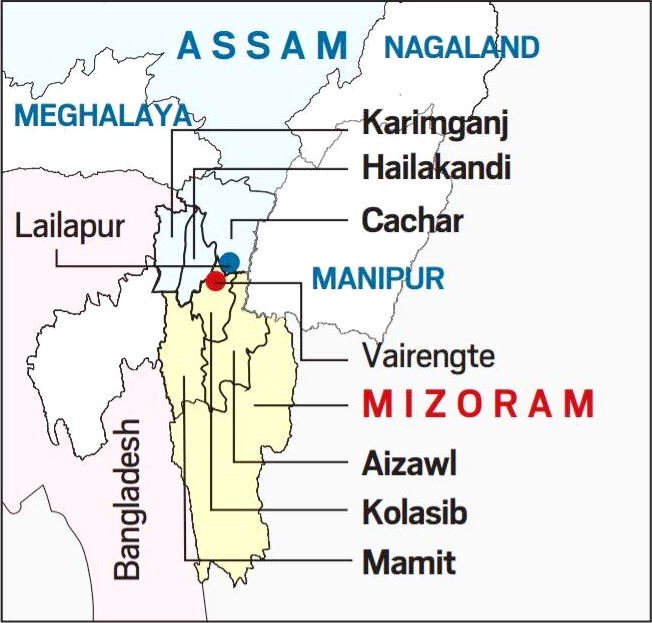Important Facts For Prelims
Statehood Day of Mizoram
- 21 Feb 2022
- 3 min read
Why in News?
Recently, the Prime Minister of India extended his wishes to the people of Mizoram on its 36th Statehood Day (20th February).
- The formalization of Mizoram State took place on 20th February, 1987 after the 53rd Amendment of the Indian Constitution, 1986.
What do we know about Mizoram?
- Historical background: The Mizo hills area became the Lushai Hills district within Assam at the time of independence. Further, in 1954 it was renamed the Mizo Hills District of Assam.
- Mizoram was granted the status of a Union Territory in 1972 after signing an accord with the moderates of the Mizo National Front (MNF).
- The Union Territory of Mizoram was conferred the status of a full state in 1986 after signing of a memorandum of settlement (Mizoram Peace Accord) between the Central government and the MNF.
- Geographical Location:
- International Border: Myanmar and Bangladesh
- State Border: Tripura (northwest), Assam (north) and Manipur (northeast).
- Demography: Mizoram population in 2022 is estimated to be 1.27 Million and is the second least populous state in India after Sikkim.
- The Sex Ratio is 975 female per 1000 male (National: 943).
- The Literacy rate of the state is 91.58 % (National: 74.04%).
- Biodiversity: According to India State of Forest Report (ISFR), 2021 Mizoram has the maximum forest cover as a percentage of their own geographical area at (84.53%) from the North eastern region of the country.
- State Animal: Saza (serow)
- State Bird: Vavu (Hume Bartailed Pheasant).
- Protected Areas:
- Dampa Tiger Reserve
- Murlen National Park
- Phawngpui National Park
- Ngengpui Wildlife Sanctuary
- Tawi Wildlife Sanctuary
- Tribals: It has the highest concentration (percentage) of tribal population among all states of India.
- Mizos consist of 5 major and 11 minor tribes known as Awzia. The 5 major tribes include: Lushei, Ralte, Hmar, Paihte and Pawi.
- The Mizos are a close- knit society with no class distinction and discrimination on grounds of sex, status or religion.
- Mizos are agriculturists, practise “Jhum Cultivation” or slash- and- burn system of cultivation.
- Festivals and Dance: The Mizos have two main festivals- Mim Kut and Chapchar Kut.
- Mim Kut: It is a Maize festival that is celebrated during the months of August and September, after the harvest of maize.
- Chapchar Kut: It is a Spring Festival, most popular and celebrated after completion of the task of jungle clearing for “jhum” operations.
- The most colourful and distinctive dance of the Mizo is called Cheraw. Long bamboo staves are used for this dance, therefore many people call it ‘Bamboo Dance’.







